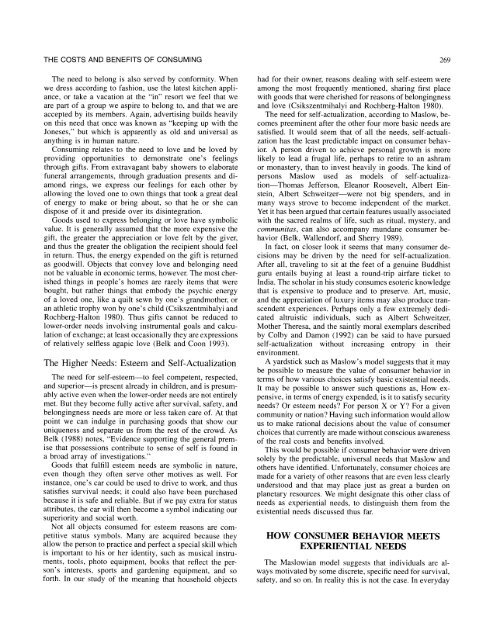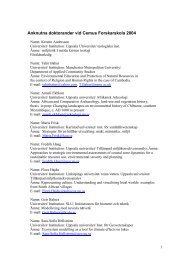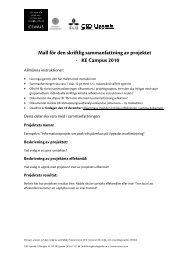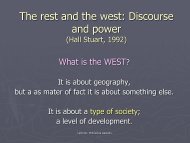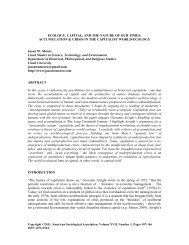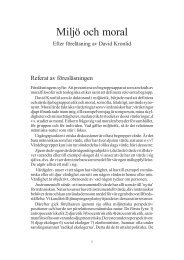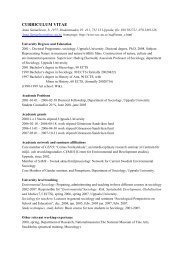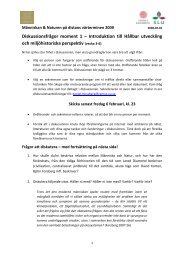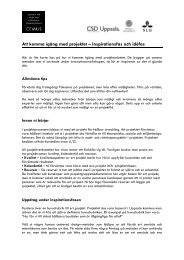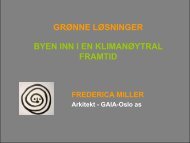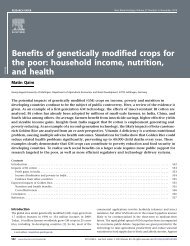The Costs and Benefits of Consuming
The Costs and Benefits of Consuming
The Costs and Benefits of Consuming
You also want an ePaper? Increase the reach of your titles
YUMPU automatically turns print PDFs into web optimized ePapers that Google loves.
THE COSTS AND BENEFITS OF CONSUMING 269<strong>The</strong> need to belong is also served by conformity. Whenwe dress according to fashion, use the latest kitchen appliance,or take a vacation at the "in" resort we feel that weare part <strong>of</strong> a group we aspire to belong to, <strong>and</strong> that we areaccepted by its members. Again, advertising builds heavilyon this need that once was known as "keeping up with theJoneses," but which is apparently as old <strong>and</strong> universal asanything is in human nature.<strong>Consuming</strong> relates to the need to love <strong>and</strong> be loved byproviding opportunities to demonstrate one's feelingsthrough gifts. From extravagant baby showers to elaboratefuneral arrangements, through graduation presents <strong>and</strong> diamondrings, we express our feelings for each other byallowing the loved one to own things that took a great deal<strong>of</strong> energy to make or bring about, so that he or she c<strong>and</strong>ispose <strong>of</strong> it <strong>and</strong> preside over its disintegration.Goods used to express belonging or love have symbolicvalue. It is generally assumed that the more expensive thegift, the greater the appreciation or love felt by the giver,<strong>and</strong> thus the greater the obligation the recipient should feelin return. Thus, the energy expended on the gift is returnedas goodwill. Objects that convey love <strong>and</strong> belonging neednot be valuable in economic terms, however. <strong>The</strong> most cherishedthings in people's homes are rarely items that werebought, but rather things that embody the psychic energy<strong>of</strong> a loved one, like a quilt sewn by one's gr<strong>and</strong>mother, oran athletic trophy won by one's child (Csikszentmihalyi <strong>and</strong>Rochberg-Halton 1980). Thus gifts cannot be reduced tolower-order needs involving instrumental goals <strong>and</strong> calculation<strong>of</strong> exchange; at least occasionally they are expressions<strong>of</strong> relatively selfless agapic love (Belk <strong>and</strong> Coon 1993).<strong>The</strong> Higher Needs: Esteem <strong>and</strong> Self-Actualization<strong>The</strong> need for self-esteem-to feel competent, respected,<strong>and</strong> superior is present already in children, <strong>and</strong> is presumablyactive even when the lower-order needs are not entirelymet. But they become fully active after survival, safety, <strong>and</strong>belongingness needs are more or less taken care <strong>of</strong>. At thatpoint we can indulge in purchasing goods that show ouruniqueness <strong>and</strong> separate us from the rest <strong>of</strong> the crowd. AsBelk (1988) notes, "Evidence supporting the general premisethat possessions contribute to sense <strong>of</strong> self is found ina broad array <strong>of</strong> investigations."Goods that fulfill esteem needs are symbolic in nature,even though they <strong>of</strong>ten serve other motives as well. Forinstance, one's car could be used to drive to work, <strong>and</strong> thussatisfies survival needs; it could also have been purchasedbecause it is safe <strong>and</strong> reliable. But if we pay extra for statusattributes, the car will then become a symbol indicating oursuperiority <strong>and</strong> social worth.Not all objects consumed for esteem reasons are competitivestatus symbols. Many are acquired because theyallow the person to practice <strong>and</strong> perfect a special skill whichis important to his or her identity, such as musical instruments,tools, photo equipment, books that reflect the person'sinterests, sports <strong>and</strong> gardening equipment, <strong>and</strong> s<strong>of</strong>orth. In our study <strong>of</strong> the meaning that household objectshad for their owner, reasons dealing with self-esteem wereamong the most frequently mentioned, sharing first placewith goods that were cherished for reasons <strong>of</strong> belongingness<strong>and</strong> love (Csikszentmihalyi <strong>and</strong> Rochberg-Halton 1980).<strong>The</strong> need for self-actualization, according to Maslow, becomespreeminent after the other four more basic needs aresatisfied. It would seem that <strong>of</strong> all the needs, self-actualizationhas the least predictable impact on consumer behavior.A person driven to achieve personal growth is morelikely to lead a frugal life, perhaps to retire to an ashramor monastery, than to invest heavily in goods. <strong>The</strong> kind <strong>of</strong>persons Maslow used as models <strong>of</strong> self-actualization-ThomasJefferson, Eleanor Roosevelt, Albert Einstein,Albert Schweitzer were not big spenders, <strong>and</strong> inmany ways strove to become independent <strong>of</strong> the market.Yet it has been argued that certain features usually associatedwith the sacred realms <strong>of</strong> life, such as ritual, mystery, <strong>and</strong>communitas, can also accompany mundane consumer behavior(Belk, Wallendorf, <strong>and</strong> Sherry 1989).In fact, on closer look it seems that many consumer decisionsmay be driven by the need for self-actualization.After all, traveling to sit at the feet <strong>of</strong> a genuine Buddhistguru entails buying at least a round-trip airfare ticket toIndia. <strong>The</strong> scholar in his study consumes esoteric knowledgethat is expensive to produce <strong>and</strong> to preserve. Art, music,<strong>and</strong> the appreciation <strong>of</strong> luxury items may also produce transcendentexperiences. Perhaps only a few extremely dedicatedaltruistic individuals, such as Albert Schweitzer,Mother <strong>The</strong>resa, <strong>and</strong> the saintly moral exemplars describedby Colby <strong>and</strong> Damon (1992) can be said to have pursuedself-actualization without increasing entropy in theirenvironment.A yardstick such as Maslow's model suggests that it maybe possible to measure the value <strong>of</strong> consumer behavior interms <strong>of</strong> how various choices satisfy basic existential needs.It may be possible to answer such questions as, How expensive,in terms <strong>of</strong> energy expended, is it to satisfy securityneeds? Or esteem needs? For person X or Y? For a givencommunity or nation? Having such information would allowus to make rational decisions about the value <strong>of</strong> consumerchoices that currently are made without conscious awareness<strong>of</strong> the real costs <strong>and</strong> benefits involved.This would be possible if consumer behavior were drivensolely by the predictable, universal needs that Maslow <strong>and</strong>others have identified. Unfortunately, consumer choices aremade for a variety <strong>of</strong> other reasons that are even less clearlyunderstood <strong>and</strong> that may place just as great a burden onplanetary resources. We might designate this other class <strong>of</strong>needs as experiential needs, to distinguish them from theexistential needs discussed thus far.HOW CONSUMER BEHAVIOR MEETSEXPERIENTIAL NEEDS<strong>The</strong> Maslowian model suggests that individuals are alwaysmotivated by some discrete, specific need for survival,safety, <strong>and</strong> so on. In reality this is not the case. In everyday


